Central questions
- What is oscillation?
- What is the difference between transverse and longitudinal wave motion?
- How are an object's period of oscillation and frequency measured?
- What is a hertz?
A swing that goes back and forth is said to oscillate and the swing in itself is an oscillator. When the swing completes one full cycle and returns to its initial position, it has completed one oscillation. The time taken to complete one oscillation is called the period of oscillation.
In general, a motion that repeats about a point of equilibrium with a certain period is called oscillation, or vibration. Oscillations and vibrations come in all forms, but in mechanics they are confined to situations where a force acts on the oscillating object, trying to return it to the equilibrium point.
The back-and-forth motion of a pendulum bob is oscillation. When the bob is moved away from its point of equilibrium, it begins to oscillate. The bob has completed one oscillation when it returns to its starting point.
The rate of oscillation is depicted by a quantity known as frequency. The frequency of movement tells us how many oscillations take place during a single second. The frequency value can be worked out by dividing the number of oscillations with the amount of time it takes to accomplish them. Thus, the unit of frequency becomes 1/s, which is the same as one hertz, 1 Hz.
For example, the frequency at which a fly flaps its wings can be 25 hertz, meaning that the fly moves its wings 25 times per second. In contrast, the frequency at which a large bird like an albatross flaps its wings can be 0.2 hertz, which means that the albatross moves its wings once every five seconds. The transmission frequency of a radio channel can be 97.2 million hertz or megahertz (97.2 MHz), which means that the radio wave oscillates 97.2 million times per second.
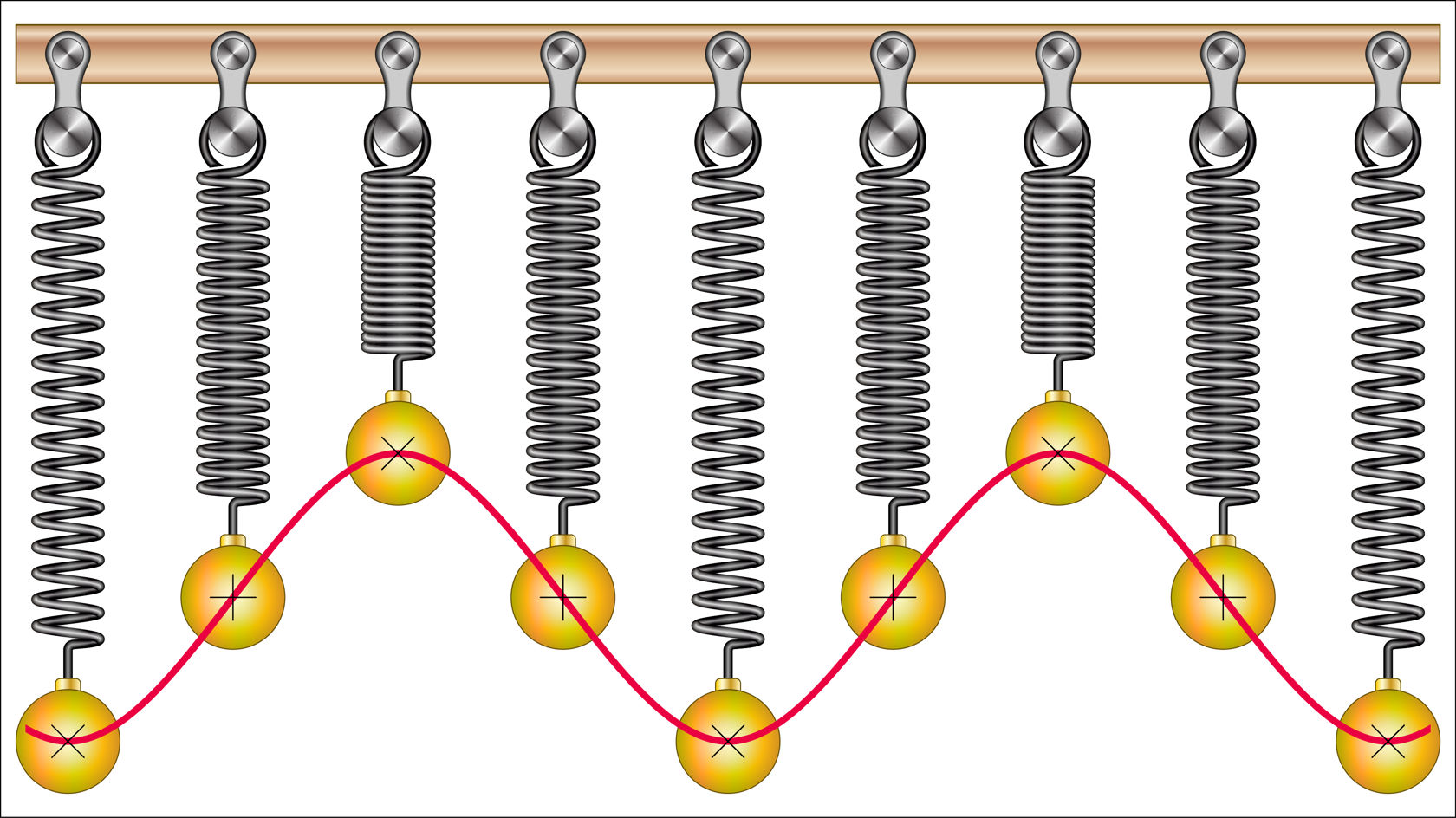
An insect species moves its wings at a frequency of 300 Hz. How many times do the insect's wings move
Solution:
First, we must collect all of the information we know.
During an experiment, a pendulum oscillated 10 times during the course of 6.0 seconds. Calculate the pendulum's period of oscillation and frequency.
Solution:
First, we must collect all of the information we know.
Both of the missing values can be calculated by using the time and the number of oscillations.
Period of oscillation =
Frequency =
When an object is dropped in water, a wave motion occurs on the water's surface. The structural particles of water begin to vibrate, and this vibration travels from one particle to the next. The phenomenon is known as wave motion. Waves do not move matter, but they move energy. A wave motion is always a result of an oscillator.
There are two types of wave motion: transverse and longitudinal wave motion. The term wavelength describes the distance from one point in the wave to the next, similar point in the wave.
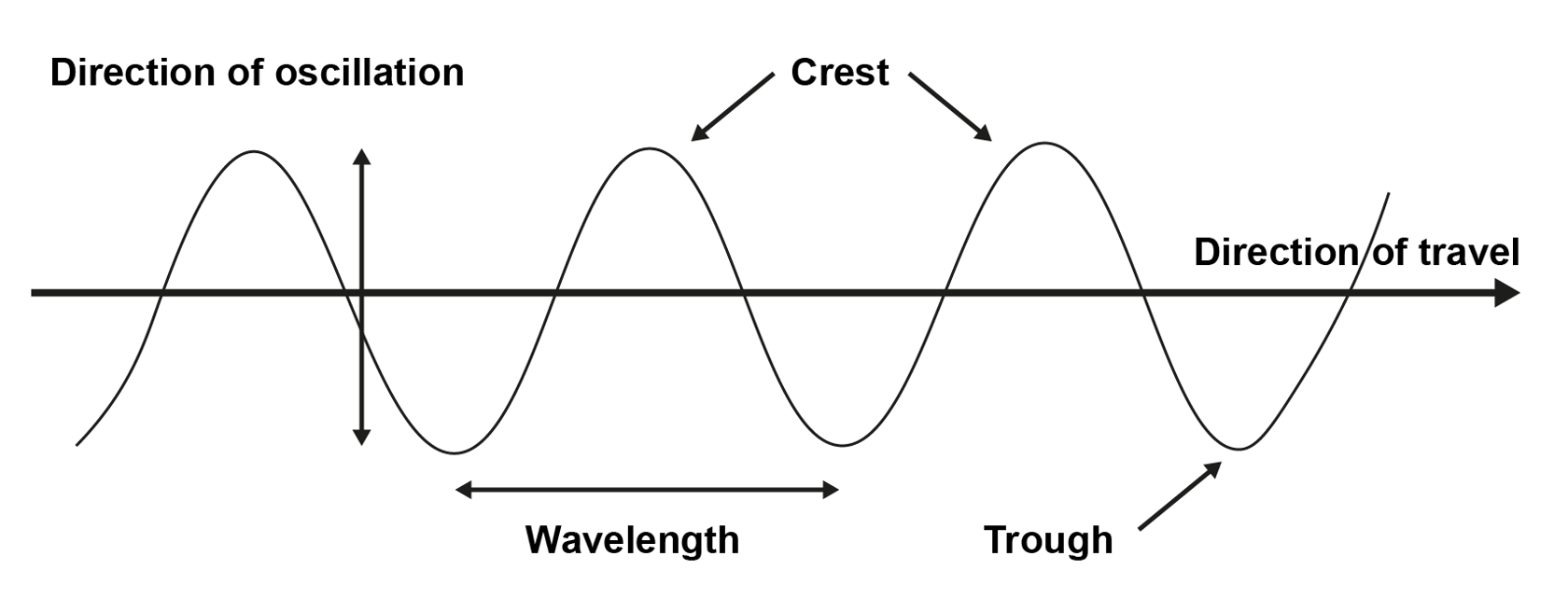
Examples of transverse wave motion include the waves of water and visible light.
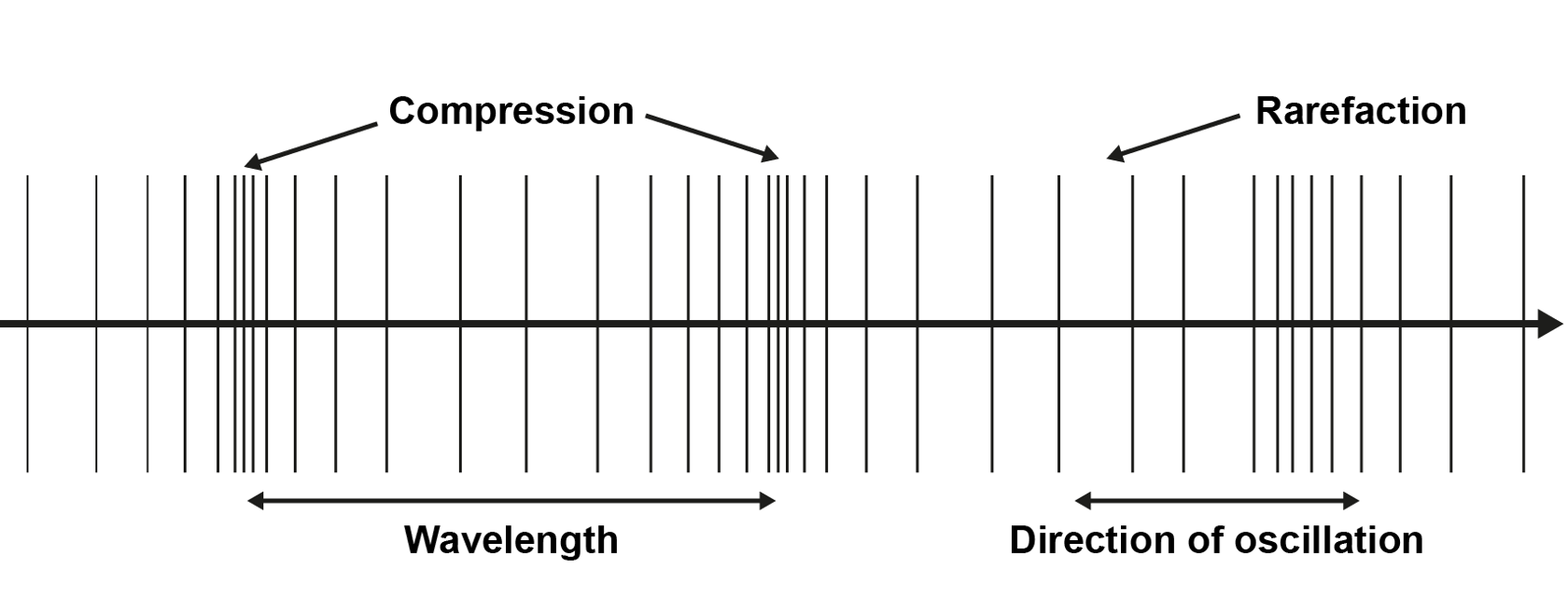
Examples of longitudinal wave motion include sound waves and some waves produced by earthquakes.

a) The number of oscillations per second is described by
b) The time it takes for a swing to move from one extreme to the other is described by
1. The vibration of a spring is an example of
2. A complete oscillation has occurred when the object has moved
3. The period of oscillation is the time it takes for an object to move
4. A pendulum completes 6 oscillations in 12 seconds. Its period of oscillation is
5. Frequency describes the number of oscillations that occur per
6. An athlete's heart rate after performing is 180 heartbeats per minute. This means that the frequency of their heart rate is
Image 1
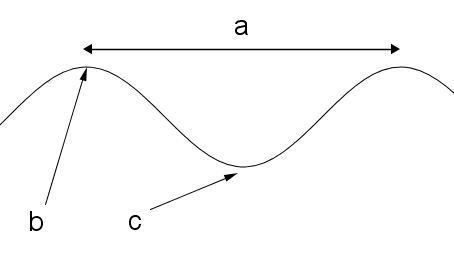
The image depicts wave motion, where the directions of oscillation and travel are .
Image 2
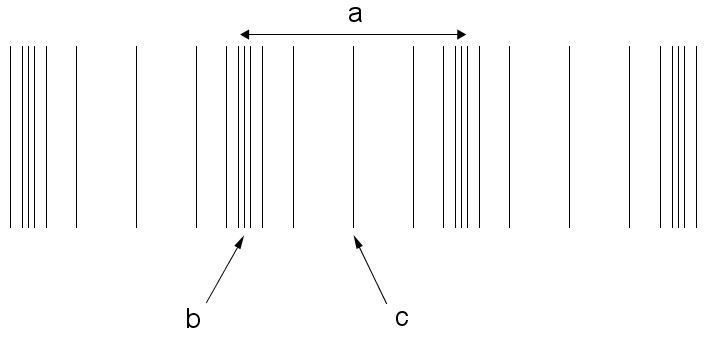
The image depicts wave motion, where the directions of oscillation and travel are.
Oscillation: A type of regular motion that moves back and forth and is centred on a point of equilibrium.
Oscillator: An object that oscillates.
Period of oscillation: The time it takes to complete one oscillation.
Frequency: A quantity measured in hertz, Hz. Describes the number of oscillations that place during a single second. Can be calculated by dividing the number of oscillations with the amount of time it takes to complete them.
Wave motion: A type of oscillation that moves in a certain direction.
Transverse wave motion: Oscillation that moves perpendicular to the wave's direction of travel.
Longitudinal wave motion: Oscillation that moves in the same direction as the wave's direction of travel.
Wavelength: The distance between similar points in the wave's oscillation.
A regular motion that moves back and forth is called oscillation. An oscillating object is called an oscillator. One complete oscillation occurs when an object moves back and forth and returns into its original location. The time it takes to complete one oscillation is called the period of oscillation. Frequency is a term that describes the number of oscillations that take place during the course of one second.
An oscillator creates a wave motion. There are two types of wave motion. In transverse wave motion, the direction of oscillation is perpendicular to the wave's direction of travel. The waves of water are examples of transverse wave motion. In longitudinal wave motion, the direction of oscillation is the same as the wave's direction of travel. Sound waves are an example of longitudinal wave motion.
Choose the "Intro" option from the simulation above. Select the options "Period Trace" and "Slow". Select two pendulums. Change the mass of the red pendulum to 1.00 kg. Move the pendulums by dragging them.

Mitä haluat tehdä tekstillä? Teksti käsitellään tekälyn avulla, eikä sitä sen jälkeen muokata tai tarkisteta. Tekstissä voi esiintyä virheitä. Tarkista tekstin oikeellisuus vertaamalla sitä kirjan alkuperäistekstiin.
Valitse tiedostot, jotka haluat lisätä. Tuetut formaatit ovat txt, html, htm, pdf, odt, odp, ods, xls, xlsx, ppt, pptx, pps, doc, docx, rtf, png, jpg, jpeg ja gif.
| Nimi | |
|---|---|
| poista |
Huom.! Linkkien tulee alkaa ”http://”!
Opiq käyttää verkkosivun toiminnan, turvallisen käytön varmistamisen, käytön analysoimisen ja parhaan käyttömukavuuden tarjoamisen edellyttämiä evästeitä.
Eväste on käyttäjän tietokoneelta verkkosivun palvelimeen lähetettävä pieni tiedosto, joka sisältää verkkosivun toiminnan edellyttämiä käyttäjää ja hänen tekemiä valintoja koskevia tietoja.
Isoin osa evästeistä ovat Opiqin toiminnan kannalta välttämättömiä. Analyyttisistä evästeistä voi luopua ja silloin ei sinun käyttötietojasi ei käytetä Opiqin kehittämiseen. Lue lisää